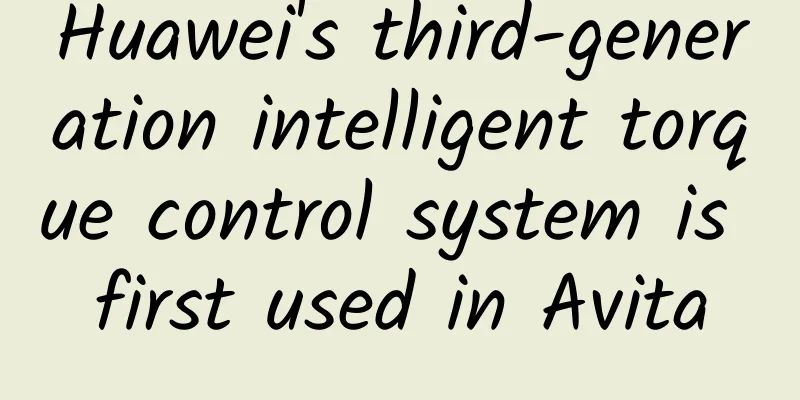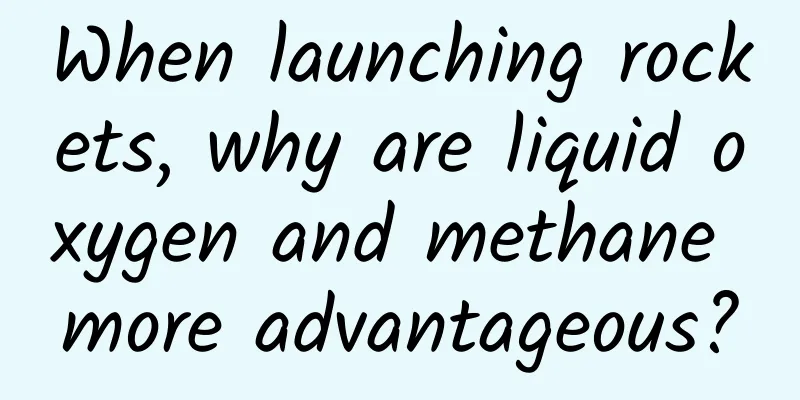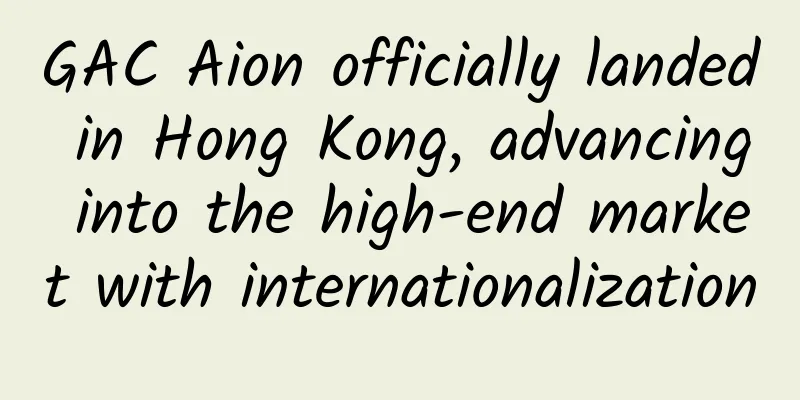Huawei's third-generation intelligent torque control system is first used in Avita

|
Judging from the current results, Huawei has built up its core advantage in intelligence with the two major "technical fulcrums" of ADS 2.0 and Hongmeng cockpit. But at the same time, Huawei is well aware that the "core definition" of high-end intelligence is strongly related to driving safety and comfortable driving. Therefore, the importance of the power domain as a vehicle safety guarantee and power output is becoming more and more obvious. In Huawei's "smart car technology map", the intelligent power domain will constitute the "new three major components" of smart cars with intelligent driving and intelligent cockpit, which are also the three cores of Huawei's smart car supporting solutions. Based on Huawei's continuous and in-depth technical empowerment for Avita in the fields of intelligent driving and intelligent cockpit, Avita has the product advantages of high intelligence, high intelligent driving and high performance. The "high performance" is Huawei's DriveOne electric drive system, which has a high burst and strong output power level thanks to its original technology development. In order to take into account driving safety and comfort and stability, Huawei has newly developed an intelligent software algorithm based on the intelligent electric drive system, namely Huawei DriveONE iTRACK, and it was first launched on Avita's dual flagship products. The Avita 11 and Avita 12 models have been equipped with Huawei DriveONE iTRACK through OTA upgrades since January 31. Compared with Huawei's second-generation torque control system solution (DATS), the Huawei DriveONE iTRACK used by Avita is a third-generation solution, which is specially optimized for speed bumps, epoxy roads, and ice and snow roads. In the face of speed bump scenarios, whether accelerating, decelerating or sliding, Huawei DriveONE iTRACK can quickly take effect, reducing the vibration amplitude by 50% and shortening the bump time by 40%. Driving comfort is doubled. In the face of low-adhesion surfaces such as epoxy roads, Huawei DriveONE iTRACK can achieve microsecond perception and millisecond adjustment, effectively suppressing vehicle skidding and making the vehicle drive smoother and safer. The iTRACK function of Huawei's DriveONE electric drive system is based on a faster response architecture. It uses ultra-fine road condition perception technology and real-time torque adjustment technology to achieve more intelligent operation of electric drive. It has been customized and optimized for Avita 11 and Avita 12, and better cooperates with Avita chassis technology to provide users with a more extreme driving experience. Focusing on the application scenarios, when the vehicle is driving on bumpy roads or passing over speed bumps and other high-frequency pain point scenarios, the positive torque acts on the tires because the tires are in an airborne state when passing over the "obstacles", which in turn causes the tires to have impact aftershocks with the ground and transmit them back to the cockpit, causing a sense of frustration. In typical low-adhesion road scenarios such as snowy roads and epoxy basements, due to the influence of the low friction coefficient, when the vehicle power increases too quickly, it is very easy to cause the tires to spin. At this time, the wheel speed difference is too large, resulting in the vehicle's wheel slippage and idling power loss, as well as unstable driving posture caused by slipping. When the vehicle speed is too fast, the vehicle may even skid, resulting in the risk of vehicle rollover or collision, endangering driving safety. In order to find the best balance between safety and comfort in the above high-frequency pain point scenarios, most car manufacturers use wheel speed sensors to detect tire status. At this time, the vehicle powertrain controller issues instructions to the power domain through the analysis of working condition data, thereby achieving adaptive adjustment of power output. However, traditional wheel speed sensors have the disadvantages of low detection accuracy and slow judgment of slippage; long torque path and low control frequency, which leads to large wheel speed fluctuations, severe impact, obvious wheel idling, and poor starting experience; and most vehicle power systems cannot achieve millisecond-level response to torque control and adjustment. Therefore, the above difficult pain points cannot be completely cured, which greatly affects driving comfort and safety. Huawei DriveONE iTRACK optimizes vehicle perception performance and power control through intelligent upgrades in the power domain, and integrates the power domain's integrated intelligent control of drive, braking, steering, and suspension to address the technical limitations of the power domain of traditional solutions. The Huawei DriveONE iTRACK developed by Huawei for Avita is supported by two core technologies. It can achieve microsecond-level road condition perception 10,000 times per second and millisecond-level torque adjustment 1,000 times per second. Compared with the traditional architecture, the control link is shorter and the closed-loop speed is increased by 10 times, allowing early prediction and instant response. Its technical principle has three major characteristics. 1. Innovative closed-loop architecture to achieve faster power closed-loop control; Second, it can achieve ultra-fine real-time road condition perception technology at the subtle level of 10,000 times per second; 3. It can achieve millisecond-level real-time torque adjustment technology 1000 times per second, effectively reducing the impact of speed bumps and bumps on potholes. To deal with the three typical high-frequency pain point scenarios mentioned above, namely, speed bumps, potholes, extreme weather such as snow, freezing rain, and slippery roads such as underground garages. After Huawei DriveONE iTRACK is involved, Avita can achieve smoother feedback on speed bumps, with a 30% reduction in wheel-end speed fluctuations; smoother feedback on low-adhesion roads, a 3% increase in operating efficiency, and low-adhesion road drive slippage suppression, with a 40% reduction in front and rear wheel speed difference. Compared with traditional solutions, Huawei DriveONE iTRACK can enable Avita to maximize the vehicle's limits in all-scenario, all-weather, and high-real-time complex extreme scenarios, improve vehicle driving safety and stability, and ensure a stable and comfortable driving experience. In order to verify the technical advantages of Huawei DriveONE iTRACK under extreme working conditions, Avita demonstrated its far-leading intelligent driving capabilities and solid and reliable mechanical qualities through a series of ice and snow challenges. Among them, the ice attitude competition mainly tests the vehicle's driving performance on ice and snow roads with an adhesion of less than 0.25, and evaluates the vehicle's driving quality through the evaluation standards of body posture and power output. After activating Huawei DriveONE iTRACK, the Avita 11 uses millisecond-level torque control to ensure that the tires do not slip, the body does not deflect, and the chassis does not bump when driving on ice under the condition of full torque output of 650N·m, passing the test with a perfect driving posture. From the perspective of the core technology, the reason why Huawei DriveONE iTRACK can still ensure the stability and comfort of vehicle driving in complex environments, extreme scenarios, and harsh working conditions is that the core factor lies in the redefinition of "intelligent logic". It abandons the technical thinking of traditional solutions and allows the vehicle's entire vehicle control system to advance from "passive triggering" to "active intelligence." At the same time, Huawei DriveONE iTRACK is not a so-called hardware superposition, but is based on the continuous iteration and upgrading of intelligent software algorithms, which enables vehicles to have sustainable digital capabilities, and this is also the core technical barrier built by Huawei in the field of intelligence. Huawei, which insists on not making cars, positions itself as an "incremental supplier of smart car parts" to empower car companies. Emerging brands like Avita also take advantage of Huawei's in-depth technical empowerment and rely on Huawei's industry-leading "intelligent manufacturing" capabilities to gain a competitive position in the high-end smart electric vehicle market. As a winner of Toutiao's Qingyun Plan and Baijiahao's Bai+ Plan, the 2019 Baidu Digital Author of the Year, the Baijiahao's Most Popular Author in the Technology Field, the 2019 Sogou Technology and Culture Author, and the 2021 Baijiahao Quarterly Influential Creator, he has won many awards, including the 2013 Sohu Best Industry Media Person, the 2015 China New Media Entrepreneurship Competition Beijing Third Place, the 2015 Guangmang Experience Award, the 2015 China New Media Entrepreneurship Competition Finals Third Place, and the 2018 Baidu Dynamic Annual Powerful Celebrity. |
<<: Smart TVs have security holes
Recommend
Are you still playing with your phone before bed? Be careful!
After a busy day, I washed up and lay down on the...
Are dual cameras useless? 70% of respondents said they don’t care whether their phones have dual cameras
For most consumers, whether the camera function i...
Want a “screen-sweeping” promotion for NetEase Music? Here are 8 ways
Why does the traffic increase when users are mock...
Microsoft Authenticator for iOS is updated to officially stop supporting Apple Watch
On February 7, Microsoft confirmed that it had de...
I'm still coughing after I've recovered from a cold! How should I choose cough suppressants and expectorants?
Clinically, cough is the most common symptom in p...
Matcha flavored mouthwash? It's not a hard job! It has many benefits!
Compiled by: Gong Zixin It is reported that accor...
What triggered a dramatic decline in marine biodiversity 460 million years ago?
Produced by: Science Popularization China Author:...
Return of the industrial spirit: Is the bubble of Internet mobile phones beginning to burst?
After Xiaomi's market share dropped sharply a...
What impact will Israel’s “seawater flooding tunnels” have?
On December 4, the US media revealed that in orde...
The combined profits of China's six largest automakers are less than that of Toyota alone
The latest Fortune Global 500 list was released, ...
Electric Technology Car News: Domestic SUV accelerates from 0 to 100 km/h in 4.9 seconds. Can the joint venture BYD Song DM compete with the Highlander?
The college entrance examination will be here in ...
No cough or fever, but both lungs are white! Who is prone to this? Pay attention to 3 warning signs——
Recently, topics related to "white lung"...
How to create classic public relations planning cases and plans?
Public relations planning, also known as "pu...
JDPower: China's sales service satisfaction ranking in 2023
Recently, JD Power released the 2023 China Sales ...
Where can I find the short video material library for self-media short video production?
As a popular platform nowadays, short video platf...









